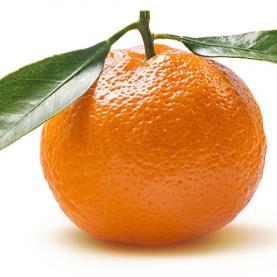Chestnut
An autumnal food, chestnuts are seeds that are also known as ‘accessory fruit’ and have been enjoyed since prehistoric times. Domesticated since Antiquity, they became a staple foodstuff in the Middle Ages as a substitute for wheat in times of shortage. Chestnuts are the product of the chestnut tree, of which twenty varieties exist in Europe. They ripen inside spiky, waterproof casings called husks. After harvesting, chestnuts can be dried to be turned into flour.
‘The bread of the woods’
Wild chestnuts have probably been gathered since prehistoric times as winter food in Europe and Asia Minor. Chestnut trees were then domesticated there and added to orchards during Antiquity. In France, the first chestnut orchards appeared in the Cévennes, an area which would later develop into a famous production centre in medieval Europe. In the Middle Ages, chestnuts became a staple foodstuff in Europe, earning them the nickname ‘bread of the woods’. Their flour was used as a substitute for wheat in times of shortage. During this period, the chestnut tree joined the oak in monastic gardens.
Today, worldwide consumption mainly takes the form of by-products and requires industrial cultivation, carried out at production centres in Europe, Asia and on the American continent. However, chestnut-picking in the forest remains a very popular leisure activity.
From sapling to seed
The chestnut tree sapling is planted out in cleared ground in winter. As it grows, the damaged branches are removed and the tree is trimmed into an ideal round shape, and treated regularly against insects, fungi and parasites. Pruning (trimming for maintenance purposes) is carried out after fructification to enable new branches to grow.
In spring, the chestnut flower is naturally pollinated by bees, however more controlled pollination by human intervention provides a more plentiful, regular crop of good-sized fruit.
When chestnuts are ripe, they are harvested mechanically using suction or sweeping machines, or manually by gathering the fallen husks from the ground using rakes, sticks, pincers and protective gloves.
To prevent chestnuts from fermenting after harvesting, they can be dried traditionally in a small two-storey drying house (known in the Cévennes as a clède). On the ground floor, a chestnut husk fire with no flames burns continuously and upstairs, the floor is dotted with holes. The chestnut harvest is laid on the floor and turned regularly. The skin can then be removed to obtain peeled chestnuts. Known locally as châtaignons, the pale parts can be eaten after cooking or ground into flour. Pioneered in the Cévennes, this artisanal drying process often takes three to six weeks. The industrial drying process works in the same way in heated vats, but the treatment is quicker.
A type of nut
The chestnut tree has a straight trunk covered in a bark with lengthwise cracks, and alternate, deciduous leaves up to 20 cm long. A waterproof shell with flexible spikes, called a chestnut husk, provides a casing for the fruit, which consists of two or three chestnuts. These are actually seeds, also known as ‘accessory fruit’. Twenty varieties exist in Europe, including the Comballe, Marigoule, Bourrue, Montagne and Bouche Rouge.
BANCEL, Jean-Louis, 2002. La culture de la châtaigne dans le Haut-Vivarais : “Hier et Aujourd’hui”. Lyon : Éditions Bellier.
ISBN : 9782846310529
BREISCH, Henri, 1995. Châtaignes et Marrons. Paris : CTIFL.
JEANGUYOT, Michelle et SÉGUIER-GUIS, Martine, 2004. L’herbier voyageur : histoire des fruits, légumes et épices du monde. Toulouse : Éditions Plume de carotte.
ISBN 9782951662971
VERCELLONI, Matteo, 2009. L’invention du jardin occidental. Rodez : Éditions du Rouergue.
ISBN 9782812600470






